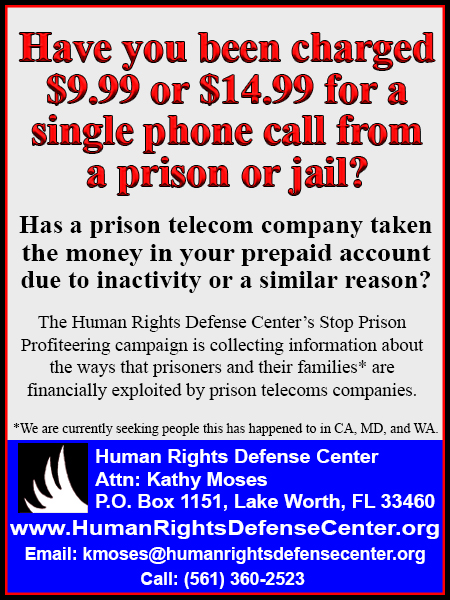by Anthony W. Accurso
Voluntary consent allows law enforcement to search property without a warrant, and officials in Georgia are using this loophole to locate cash belonging to airport travelers in Atlanta, which is then seized and used to fund more police operations. Lawsuits filed by two comedians has drawn …
by Anthony W. Accurso
The lack of effective privacy legislation covering the U.S.—combined with the occasional, poorly worded limitations imposed by the courts—has led to the current situation where law enforcement and other government agencies have been purchasing data about U.S. residents on the open market that they would not …
by Anthony W. Accurso
The Supreme Court of North Carolina held that the warrantless search of a disabled vehicle was not reasonable when officers had the authority to arrest the driver but failed to do so because he fled the scene.
McDowell County Deputy Jesse Hicks and State Highway Patrol …
by Anthony W. Accurso
The Fourth Amendment to the U.S. Constitution guarantees “[t]he right of the people to be secure in their persons, houses, papers, and effects, against unreasonable searches and seizures” and requires that warrants be issued only “upon probable cause, supported by oath or affirmation, and particularly describing …
by Anthony W. Accurso
The Supreme Court of Minnesota ruled that the standard for probable cause to conduct a warrantless search of a vehicle requires more than the mere odor of marijuana.
Adam Lloyd Torgerson was stopped by Litchfield Police on the evening of July 5, 2021, because his “vehicle’s …
by Anthony W. Accurso
The Supreme Court of New Jersey held a lower court erred when it allowed an FBI agent to testify about cell site location information (“CSLI”) regarding defendant’s alleged location during the timeframe the charged offense occurred based on the agent’s personal “rule of thumb” approximation of …
by Anthony W. Accurso
Skydio, a popular drone manufacturer, released the new X10, whose main selling point is an infrared camera, which allows it to track people and fly autonomously in the dark.
The company began making hobby drones about a decade ago, selling them to athletes who wanted something …
by Anthony W. Accurso
The U.S. Court of Appeals for the Third Circuit held that a defendant who possessed the keys to a rental car that was rented by his girlfriend (who gave permission to him to possess the keys and operate the car) had a reasonable expectation of privacy …
by Anthony W. Accurso
The FBI’s effort to disable an army of zombie computers being used for cyber-crime is pretty mediagenic, but it is the latest step in the DOJ’s plan to render jurisdictional limits on law enforcement power obsolete.
For the last two decades or so, the internet has …
by Anthony W. Accurso
The U.S. Court of Appeals for the Fifth Circuit held that a defendant’s revocation sentences were nullified after the underlying sentence of which they were a part was vacated.
Eddie Lipscomb was convicted in 2008 of being a felon in possession of a firearm under 18 …





